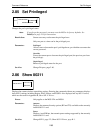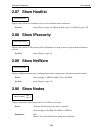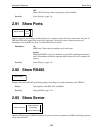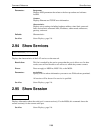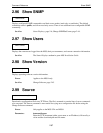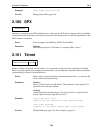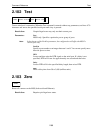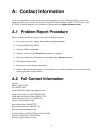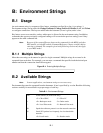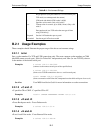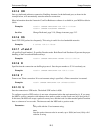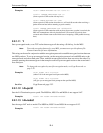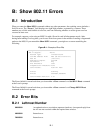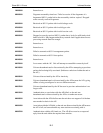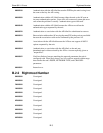
B-1
B: Environment Strings
B.1 Usage
An environment string is a sequence of key letters, sometimes prefixed by a plus (+) or minus (-).
Environment strings can be used with Change Dedicated, Change Preferred, Hostlist, LAT, and Telnet
to configure connections. The keys are added after the hostname (if one is given) and a colon.
Key letters are not case-sensitive, and no white space is allowed in the environment string. In addition,
commands that oppose previously-configured settings will overwrite the previous setting, even if they
appear on the same command line.
Note: Because of the syntax difference between the commands for the MSS4 and other
MSS models, you should read the Command Reference chapter carefully before
entering a command. The examples given in the following sections may not apply
to your MSS model.
B.1.1 Multiple Strings
More than one string can be entered as part of a single command. Multiple strings do not need to be
separated from each other. For example, you can enter a command that specifies both the desired port
number and that the connection should be encrypted.
Figure B-1: Entering Multiple Strings
B.2 Available Strings
Note: In most applications, environment strings are not necessary.
Environment keys must be separated from the hostname, if one is specified, by a colon. Read the following
sections carefully for more details on proper usage of each key.
Local>> CHANGE PREFERRED TELNET 192.0.1.3:2001Y
Table B-1: Environment Strings
nnnn socket number (TCP and UDP only)
C +C = CR to CRLF, -C = CR to LF
D +D = Backspace mode -D = Delete mode
E +E = Local Echo mode -E = Remote Echo mode
OR Speaks the redirector protocol over the network connection
OS Sends SYN packets less frequently, for slow-bandwidth
networks.
P +P = Passall mode -P = Passthru mode



